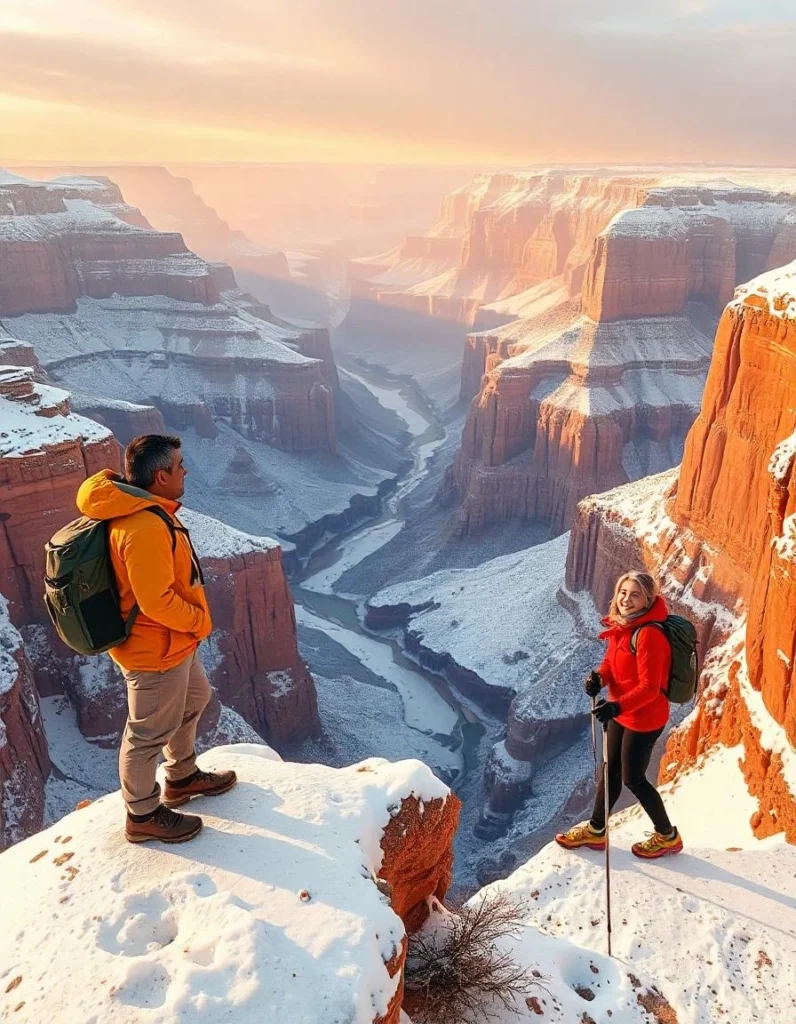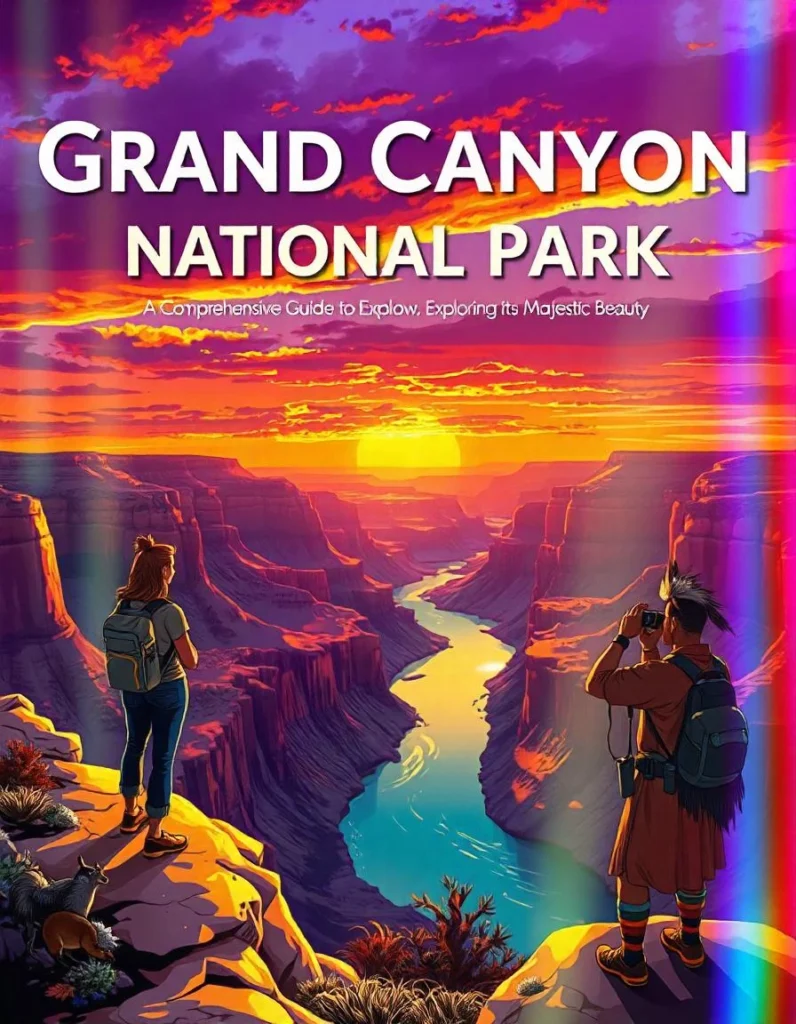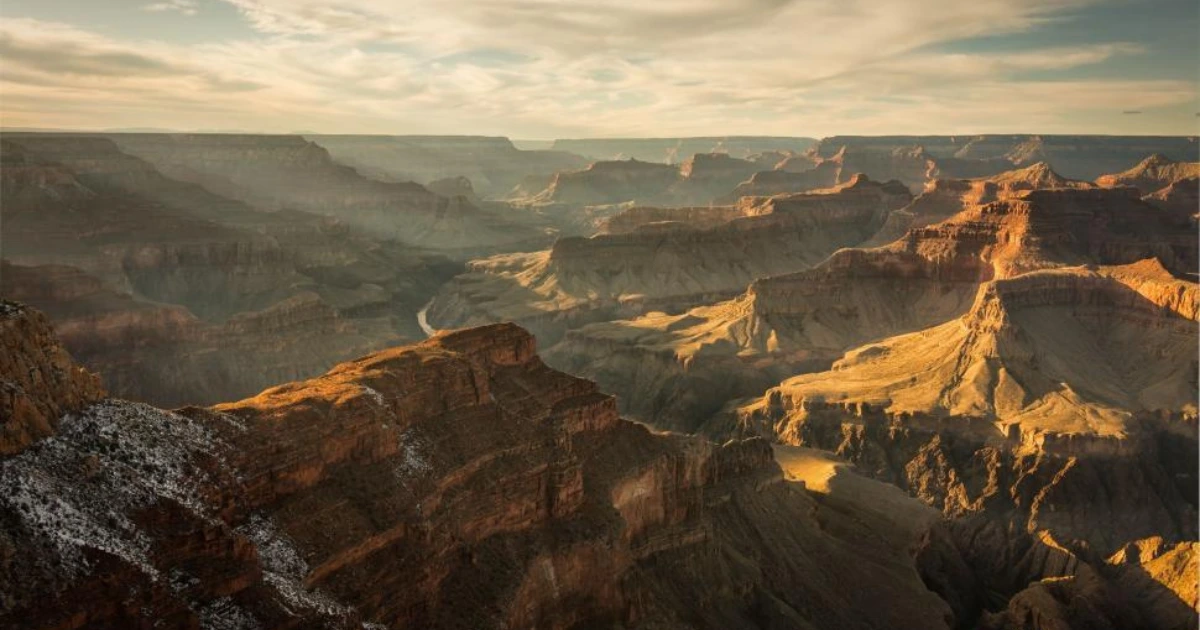The Grand Canyon National Park, renowned for its immense scale and its intricate and colorful landscape, is one of the most stunning natural wonders in the world. This UNESCO World Heritage site offers countless opportunities for exploration and appreciation, from its dramatic vistas to the depths of its canyons.
This comprehensive guide will cover everything you need to know for a memorable visit, including logistics, popular activities, natural and cultural history, and tips for visitors.
Table of Contents
Introduction to the Grand Canyon


The Grand Canyon is a colossal geological feature that stretches over 277 miles (446 kilometers) in length and reaches depths of over a mile (1.6 kilometers). It is the result of millions of years of geological activity, particularly the persistent erosion by the Colorado River. The canyon exposes a rich geological history, spanning nearly two billion years of Earth’s history. The park, established in 1919, receives nearly six million visitors annually, coming from all over the world to witness its breathtaking beauty.
Getting There
By Air
The closest major airports to the Grand Canyon National Park are Phoenix Sky Harbor International Airport (PHX) in Arizona and McCarran International Airport (LAS) in Las Vegas, Nevada. From these hubs, visitors can rent a car or take shuttle services to reach the park. Smaller regional airports include Flagstaff Pulliam Airport (FLG) in Flagstaff, Arizona, offering a shorter drive to the canyon.
By Car
- South Rim: The South Rim is the most accessible part of the park and is open year-round. It is approximately a 4-hour drive from Phoenix (230 miles/370 kilometers) and a 5-hour drive from Las Vegas (280 miles/450 kilometers).
- North Rim: The North Rim is more remote and less visited, offering a different experience from the South Rim. It is typically open from mid-May to mid-October due to seasonal snowfall. The North Rim can be reached via a 5-hour drive from the South Rim (215 miles/345 kilometers).
By Train
The Grand Canyon Railway offers a scenic 65-mile (105-kilometer) journey from Williams, Arizona, to the South Rim, providing a unique and nostalgic travel experience.
When to Visit
The Grand Canyon can be visited year-round, but each season offers a different experience:
- Summer (June to August): This is the peak tourist season, with warm temperatures and a full array of services and activities available. Visitors should be prepared for large crowds, especially at the South Rim.
- Fall (September to November): The fall offers cooler temperatures and fewer crowds. The foliage, especially along the North Rim, can be quite beautiful as it changes color.
- Winter (December to February): The South Rim remains open, but the North Rim is closed due to snow. The winter months offer a quieter experience, with potential snow adding a unique beauty to the landscape.
- Spring (March to May): Spring is a wonderful time to visit, with blooming wildflowers and moderate temperatures. This season sees a gradual increase in visitors as the weather warms.
Exploring the Rims
South Rim
The South Rim is the most popular and accessible part of the Grand Canyon, offering numerous facilities and services. It features several iconic viewpoints and trails:
- Mather Point: A popular and easily accessible viewpoint, Mather Point offers stunning panoramic views and is a great starting point for first-time visitors.
- Yavapai Observation Station: This station provides interpretive exhibits and another excellent vantage point of the canyon.
- Rim Trail: This relatively flat and easy trail follows the edge of the canyon for about 13 miles (21 kilometers), offering breathtaking views along the way.
- Hermit Road: Open seasonally to private vehicles or accessible by shuttle bus, this scenic drive provides access to several viewpoints and trailheads.
North Rim
The North Rim is less developed and receives far fewer visitors than the South Rim, offering a more solitary and peaceful experience. It is known for its dense forests and cooler temperatures:
- Bright Angel Point: A short trail leads to this viewpoint, offering spectacular views of the canyon and a sense of its vastness.
- Cape Royal and Point Imperial: These viewpoints offer some of the most dramatic vistas in the park. Cape Royal provides a sweeping view of the canyon, while Point Imperial is the highest point on the North Rim, offering expansive views toward the Painted Desert.
Hiking Adventures
The Grand Canyon offers a wide variety of hiking opportunities, ranging from short, accessible trails to strenuous backcountry routes. Safety is paramount, as the canyon environment can be challenging and unforgiving.
Popular Trails
- Bright Angel Trail: This well-maintained trail descends into the canyon from the South Rim. It offers a challenging hike with stunning views, passing through diverse environments. Hikers should plan to carry plenty of water and be prepared for significant changes in temperature and elevation.
- South Kaibab Trail: Known for its sweeping views, this trail provides a more direct route into the canyon compared to the Bright Angel Trail. It is steeper and has less shade, making it a challenging but rewarding hike.
- Rim-to-Rim: The iconic Rim-to-Rim hike takes ambitious hikers from the North Rim to the South Rim (or vice versa), covering approximately 24 miles (39 kilometers). This trek requires careful planning, adequate preparation, and possibly an overnight stay at Phantom Ranch or in designated backcountry campsites.
Safety Considerations
- Stay Hydrated: The dry climate and physical exertion can lead to dehydration. Carry and drink plenty of water regularly.
- Know Your Limits: Hiking into the canyon is physically demanding. Assess your fitness level realistically and be prepared for a strenuous return climb.
- Watch the Weather: Weather conditions can change rapidly, particularly during the summer monsoon season. Be aware of forecasts, and seek shelter if thunderstorms approach.
Rafting the Colorado River
Rafting through the Grand Canyon provides a unique and exhilarating way to experience its grandeur. The Colorado River offers various rafting experiences:
- One-Day Trips: Shorter trips typically cover the calmer stretches of the river, offering a taste of what the canyon has to offer.
- Multi-Day Expeditions: Extended rafting trips can last from a few days to two weeks, traversing extensive sections of the river. These trips offer a comprehensive canyon experience, including thrilling rapids and side hikes to hidden waterfalls and archaeological sites.
Wildlife and Nature
The Grand Canyon is home to a rich diversity of plant and animal life, adapted to its varied environments:
- Wildlife: Visitors may encounter elk, mule deer, bighorn sheep, and the elusive mountain lion. Birdwatchers can enjoy sightings of the California condor, peregrine falcon, and numerous other species.
- Flora: The park’s plant life varies with elevation, ranging from desert scrub at lower elevations to ponderosa pine forests at higher altitudes. Wildflowers bloom spectacularly in spring, adding vibrant colors to the landscape.
Cultural and Historical Sites
The Grand Canyon has a rich human history, reflected in its archaeological sites and cultural landmarks:
- Tusayan Ruin and Museum: This site offers insights into the lives of the ancestral Puebloan people who inhabited the region over 800 years ago. Visitors can explore the remains of a small village and view artifacts in the museum.
- Desert View Watchtower: Designed by architect Mary Colter, this structure blends seamlessly with the landscape and offers panoramic views of the canyon. It is decorated with murals and motifs inspired by Native American culture and art.
- Hopi House: Another of Mary Colter’s creations, this building serves as a cultural center and gift shop, showcasing Native American arts and crafts.
Practical Tips for Visitors
- Plan Ahead: The park’s popularity means that accommodations and tours can fill up quickly, especially during peak seasons. Make reservations well in advance for lodging, camping, and guided activities.
- Stay Informed: Stop by the visitor centers for maps, current conditions, and ranger-led programs that enhance your visit.
- Leave No Trace: Preserve the park’s natural beauty by following Leave No Trace principles. Stay on designated trails, pack out all trash, and respect wildlife and natural features.
- Dress Appropriately: Temperatures can vary greatly between the canyon rim and its depths. Dress in layers to adapt to changing conditions, and wear sturdy footwear for hiking.
Accommodation
The park offers a range of accommodations, from rustic campsites to historic lodges:
- South Rim Lodges: Options include El Tovar Hotel, Bright Angel Lodge, and Maswik Lodge, each providing a unique experience and proximity to the canyon’s edge.
- North Rim Lodging: The Grand Canyon Lodge offers cabin and motel accommodations, with stunning views from its expansive veranda.
- Camping: Campgrounds are available on both rims, with amenities ranging from basic tent sites to RV hookups. Backcountry permits are required for overnight trips below the rim.
Conclusion
The Grand Canyon National Park is a destination that invites deep reflection and exploration.
Whether you’re standing on the edge of the rim, hiking its challenging trails, or navigating the rapids of the Colorado River, the canyon’s vastness and beauty offer an unforgettable experience.
Respect the park’s natural and cultural heritage, plan thoroughly, and embark on a journey through one of the world’s most awe-inspiring landscapes.
